MACHETES
A machete is a wide blade used either as an agricultural tool similar to an axe or in combat as a long-bladed knife. The machete is a fascinating tool, available from really cheap to luxury weapons used in tactical situations.
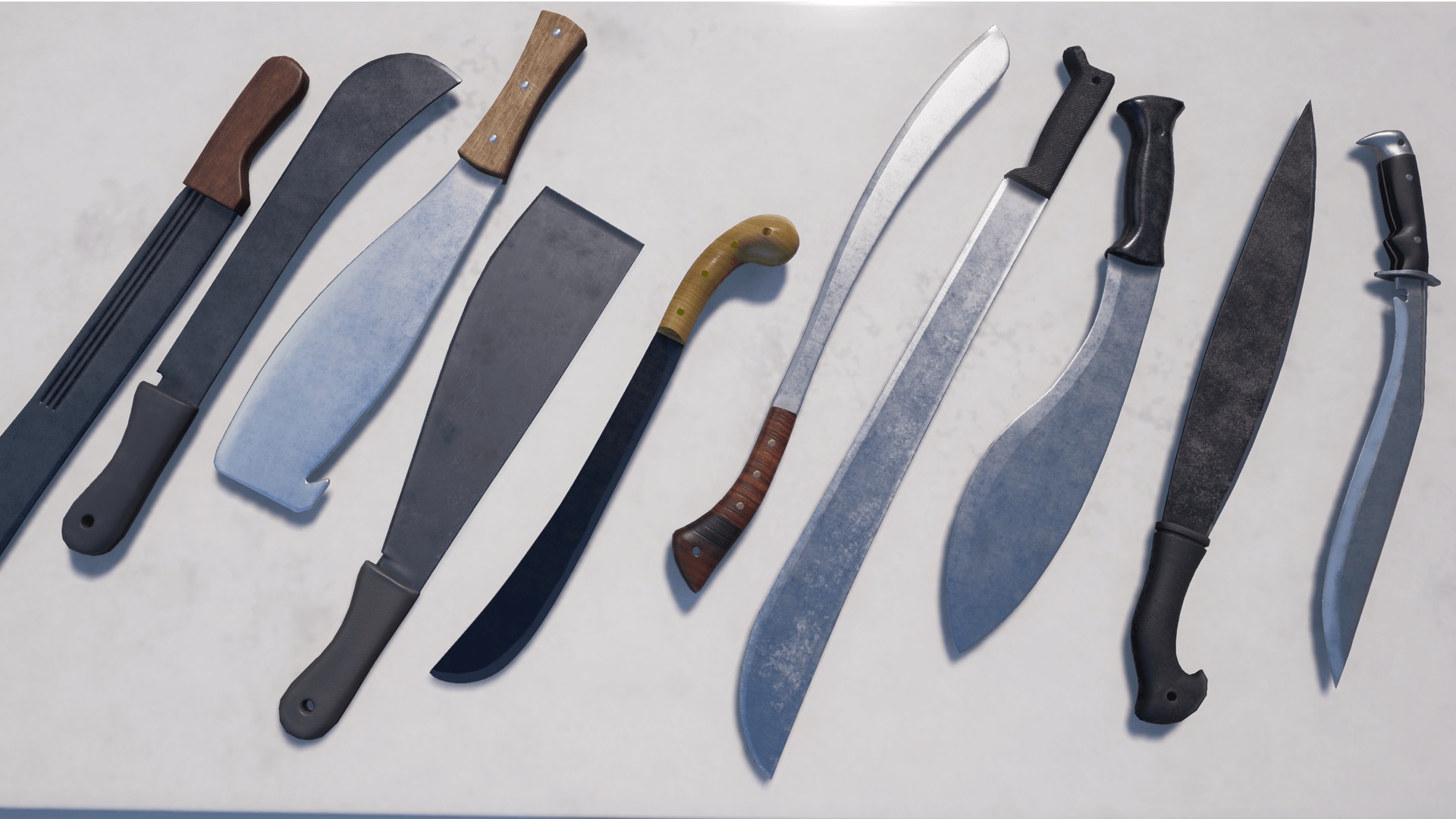
Why is it called a machete?
It is believed that the term "machete" derives from a tool used by the Spanish army in the 18th century, known as a fascine. Soldiers who used the tool called it a machete.
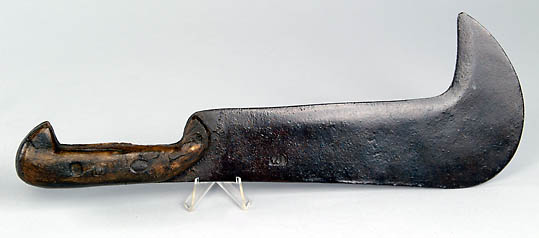
Who invented the machete?
The origins can be traced to a sickle-shaped sword used by ancient Egyptians from the third to first millennium (3000–1000 BC), known as the Egyptian Khopesh, and later the Greek Kopis. It is believed that the first machete, as we know it today, was made in Spain and was adapted from a quasi-sword.
Egyptian Khopesh
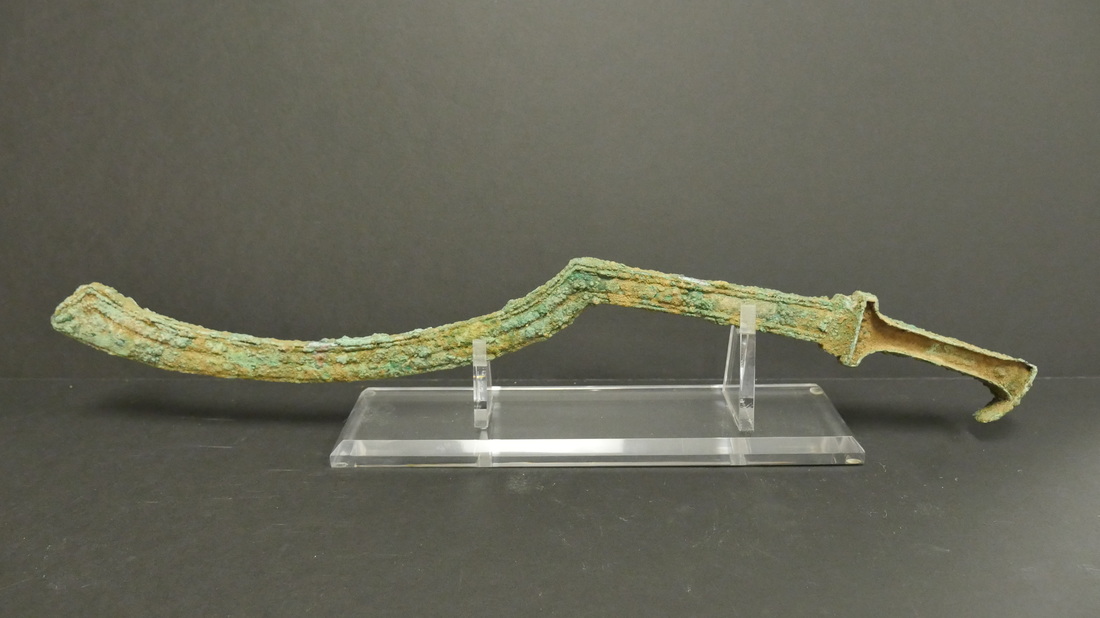
Greek Kopis
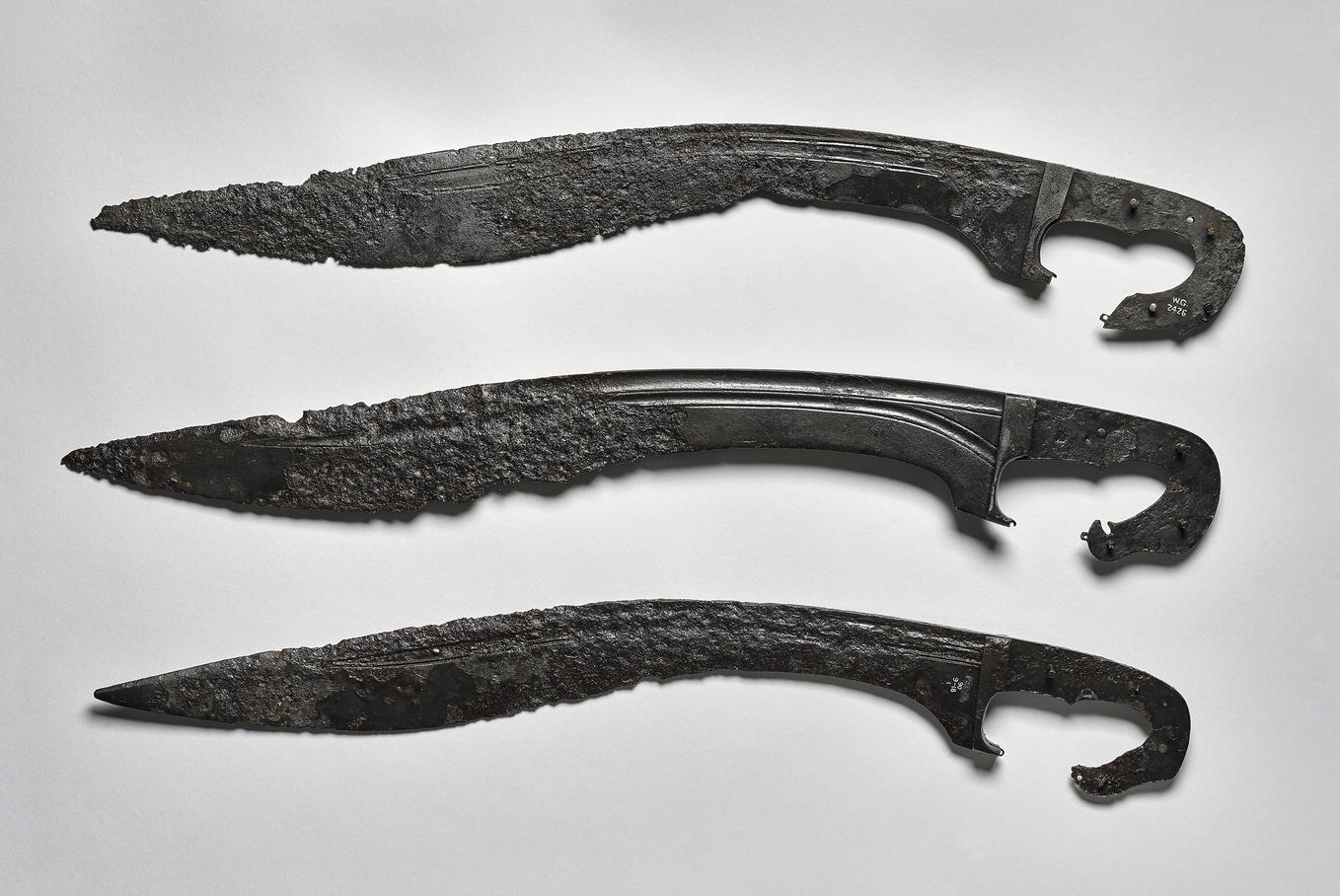
USES OF A MACHETE:
Machetes are excellent multi-purpose tools used worldwide for a wide range of tasks. Let's take a closer look at some of them:
Clearing and maintaining trails
One of the most popular uses for a machete is cutting and maintaining trails. From Southeast Asia to the Americas, people use machetes to clear paths and create new trails.
Recently, hunters and fishermen have regained interest in machetes for clearing paths to fishing spots, creating game trails, cutting weeds to create fish habitats, and making shooting lanes. A machete that is gaining popularity among many hunters and fishermen is the Kukri – a lightweight machete widely used in the Philippines for clearing brush.
Chopping compost
Another use for a machete is chopping compost into small pieces that decompose quickly.
Agricultural use
Crops such as rice, sugar cane, corn, rye, millet, barley, buckwheat, oats, and many others can be easily harvested with a machete. Bill hooks and sickle-shaped machetes are great for agricultural use.
These machete styles can also be used for removing dead plant residue from farms and gardens by scalping above-ground vegetation while leaving the root biomass in place. Additionally, removing vines is no problem. Simply chop segments of vine hugging trees for removal and apply herbicide to the chopped surface to kill the base and roots of the vine.
Chopping and splitting wood, clearing woody vegetation
Machetes are amazing tools for carving, cutting, and trimming wood. Frosting or preparing wood for treatment can be daunting without a machete, and there’s no better way to cut stumps to promote new growth. Machetes are great for pruning and clearing woody vegetation as well as snedding – removing side branches from a tree trunk.
Many landscaping professionals choose machetes for quick and clean trimming of unruly branches, plants, and hard-to-reach tall grass. Similarly, more foresters use machetes for clearing underbrush to reduce the risk of forest fires.
Camping
If you live outdoors or are on a trip, a machete is an essential tool. Machetes are a good choice for collecting firewood and small-diameter branches or for completely clearing a new campsite.
In addition, machetes excel when used to build shelters. With a machete, cutting poles and roofing materials is effortless, and it’s also useful for creating a framework from branches.
Hunting and survival
Machetes can be useful for fending off injured or angry animals and venomous snakes.
Butchering and quartering game, gathering fruit
Machetes are also great for butchering wild game, livestock, or poultry – quickly chopping carcasses of deer or large livestock into manageable pieces – and can also be used to gather berries, grapes, and other fruits and nuts.
MACHETE AS A COMBAT TOOL
Many of the killings during the Rwandan genocide in 1994 were carried out with machetes, which were the primary weapon used by the Interahamwe militias there. Machetes were also a prominent tool and weapon for the Haitian Tonton Macoute.
In 1762, the British captured Havana during a long siege in the Seven Years' War. Volunteer militia led by Pepe Antonio, a member of the Guanabacoa council, were given machetes during the unsuccessful defense of the city. The machete was also the most iconic weapon during Cuba’s wars of independence, though it was used only to a limited extent on the battlefield. Carlos Manuel de Céspedes, owner of the La Demajagua sugar refinery near Manzanilla, freed his slaves on October 10, 1868. Armed with machetes, he led them into rebellion against Spanish rule. The first cavalry charge using the machete as the primary weapon was carried out on November 4, 1868, by Máximo Gómez, a sergeant born in the Dominican Republic who later became commander of the Cuban army.
SIMILAR TOOLS
The panga or tapanga is a variant used in East and Southern Africa. The name may have Swahili origins; not to be confused with the fish panga. The panga blade widens at the back and measures 41 to 46 cm (16 to 18 inches). The upper slanted portion of the blade may be sharpened.
Other similar tools include the parang and golok (from Malaysia and Indonesia); however, these tend to have shorter, thicker blades with a primary grind and are more effective on woody vegetation.
PANGA

PARANG
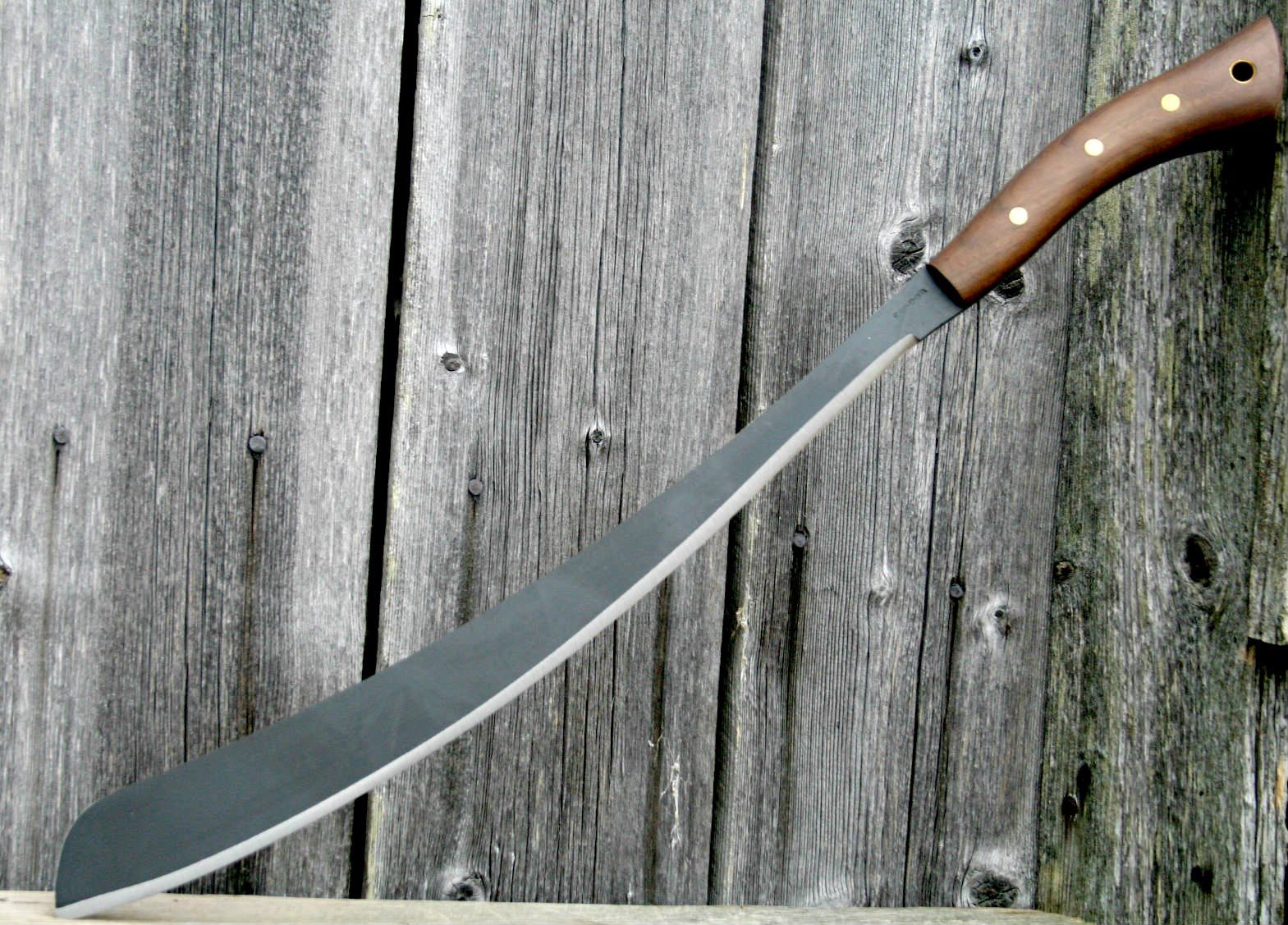
GOLOK
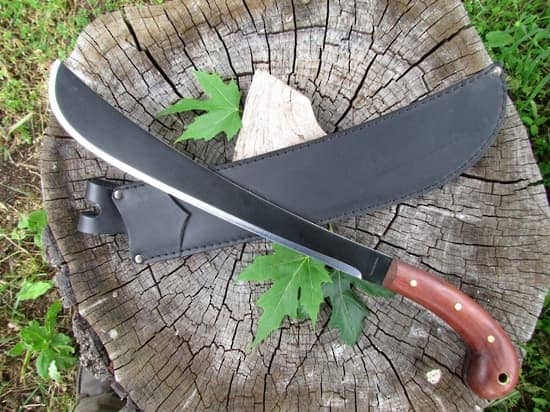
TAPANGA
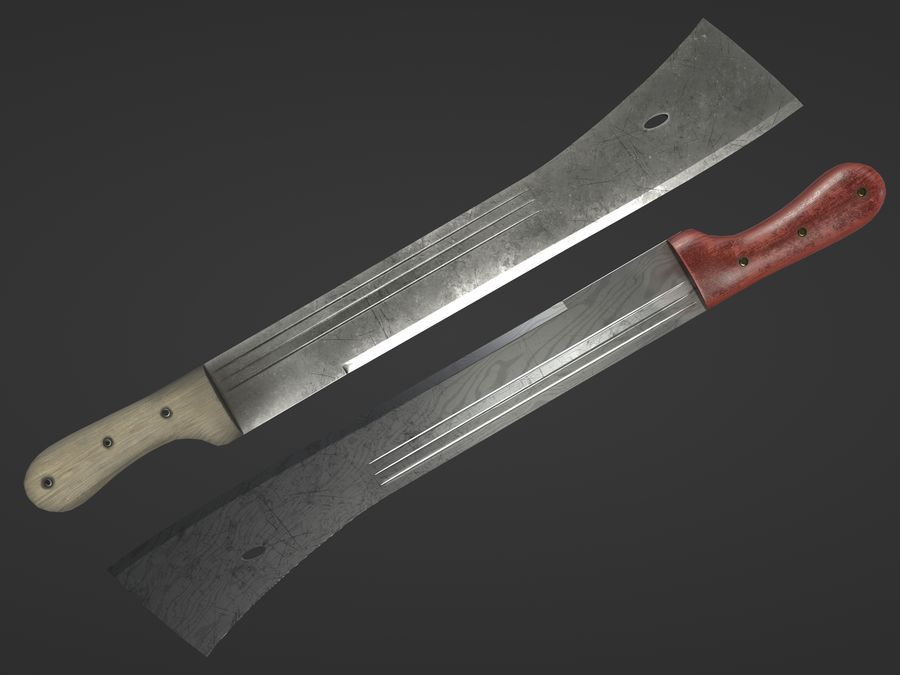
HOW TO USE A MACHETE
Always check that the area within machete reach is clear and that nothing (and no one) is directly behind you. Accidents most often happen when a machete bounces off an unseen object.
Swing down with your entire arm to increase momentum while allowing gravity to assist you.
Lead with your elbow.
Snap your wrist on contact at the last second: downward for woody vegetation and upward for grass and leafy plants.
Use the wide, heavy part of the machete blade for chopping to create momentum and direct force against the object you're trying to chop, similar to an axe.
If you’re tired, take a break before continuing. Fatigue causes injuries. Switching hands may be fine, but only if you’re reasonably coordinated with your opposite arm. Try a backhand chop with your weaker arm.
Don’t chop perpendicular to the object you’re cutting. Chop at a 45-degree angle, alternating cuts in opposite directions to remove slices of material and open up a gap. This prevents the machete from getting stuck in dense, woody vegetation.
In summary, the machete is a great, versatile tool that is widely used worldwide for an extremely wide range of tasks. Every corner of the globe has developed its own variant, most suitable for the climate, vegetation, and conditions.
At KnifeStock, we offer a wide selection of high-quality machetes, so you’ll definitely find one for you!


























































































































































 Slovakia
Slovakia  Czech Republic
Czech Republic  Austria
Austria  Germany
Germany  Hungary
Hungary  Romania
Romania  Poland
Poland